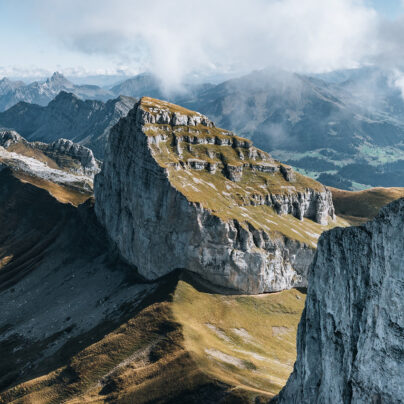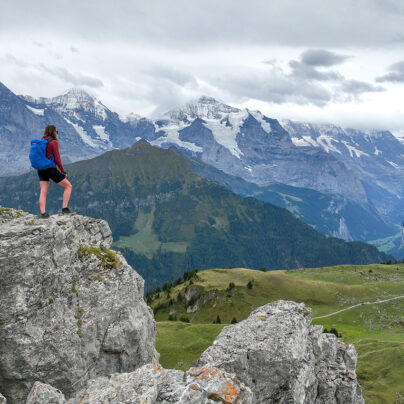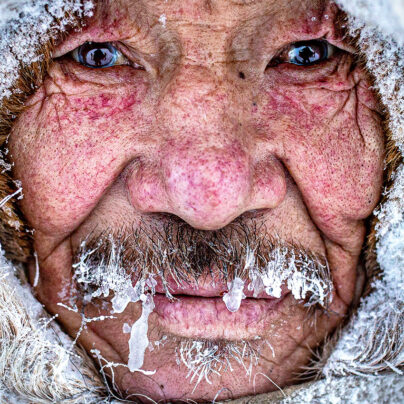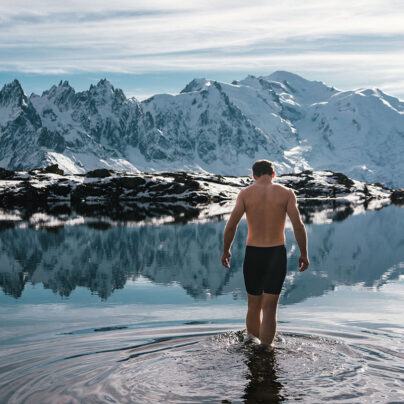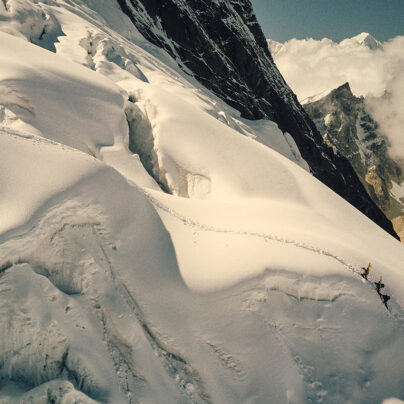Between the Bajau and Blood Tests
Ted Lamb
The engine purred and belched as our boat skimmed through deep water, which reflected a night sky shining bright with stars. In the distance, a much larger boat could be seen sitting eerily still, a couple of cabin lights reflecting towards us. I looked out to my left, and could barely make out the faint silhouette of the island Malenge.
For three weeks we had been travelling up through Sulawesi, the Spider Isle: one of the largest islands of the Indonesian archipelago, home to sprawling jungles, untamed beaches and enigmatic cultures. The cluster of islands we now moved through, cradled in the gulf between Central and North Sulawesi, is known as the Togian Islands – a paradisiacal cluster of beaches and mangroves, dotted with a handful of villages and the occasional dive school.
Our long sampan boat sliced through the midnight water past the southern edge of Malenge. I ran a hand through the water, and bright blue and green flashed there, caused by bioluminescent plankton. Occasionally, the boat would run through a dense patch of plankton and green sparks would fly up, like a train grinding on tracks.
Our destination was a small beach on the north of the island, home to Spaniards Kike and Eva Pastor. Arriving just after midnight, we jumped from the boat into the warm sea and walked up the beach to the bungalow where our hosts greeted us with grins and a meal of fried fish and noodle soup. We settled in for the night, the jungle chirping behind us.
We awoke to a loud growling and screeching echoing around the beach. Kike’s dogs had strayed too close to a troupe of wild macaques, and the fangs of one animal had scored an 8cm wound to the youngest dog’s back. This unsettling event reminded us that this beautiful location was still very much a wild place.
The journey to the islands was long and tiring. As we pushed further north into the Gulf of Tomini, phone signal dropped to a few precious spots on the highest hilltops. Being cut off worried me – I suffer from Type 1 Diabetes and Addison’s disease. The safety blanket of hospitals and healthcare that I was used to at home in the UK felt very far away. The sea was the Bajau people’s main source of medicine, but I could not expect it to save me if the insulin I had brought with me failed. En route to the islands, I had been racked by bouts of food poisoning and did not feel back to full health yet, but we were so close to the goal of documenting the lives of the people of Bajau that we could not let it stop us.
Our long sampan boat sliced through the midnight water past the southern edge of Malenge. I ran a hand through the water, and bright blue and green flashed there, caused by bioluminescent plankton. Occasionally, the boat would run through a dense patch of plankton and green sparks would fly up, like a train grinding on tracks.

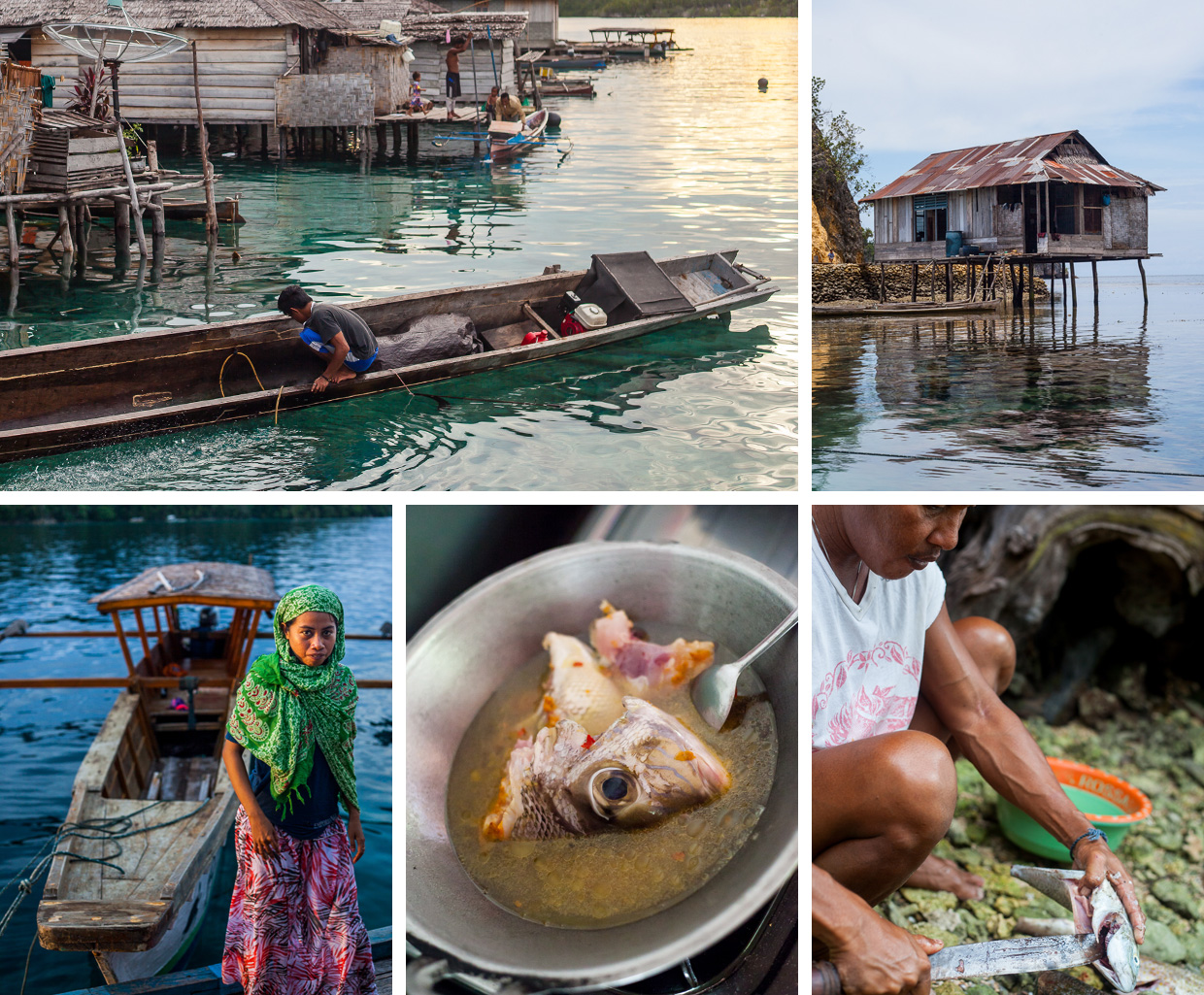

Walkers crossed over corals and schools of colourful fish darted through clear and still waters beneath. The tranquility along the bridge was broken only by the splashing and cheerful screams of children leaping into the water, whose never-ending smiles let on an inkling of mischief.
When I checked my blood sugar levels that morning, they were still running high. Far too high to allow a brush with fire coral on my left foot to heal. Despite being a few days old, the wound was still irritating, and the high sugar on top of the humidity made me prone to infection. I dosed up on insulin before we boarded Kike and Eva’s boat and headed out to the village of Palau Papan. We pushed away from the shore towards the expanses of coral reefs, the Bajau equivalent of a farmer’s field, pharmacy and local store all rolled into one.
Situated at the end of an 800m walkway, Palau Papan is huddled around a rocky outcrop, and there is very little flat earth on which to build housing or any other structure. Instead, the village stands almost effortlessly atop stilted gangways and decking. Wooden walkways rise up out of sapphire-blue waters, supporting the houses and livelihood of the villagers. The village almost feels as if it has been grown rather than built. A simple mosque made of concrete and metal sheets forms its heart.
At the time of our visit, the long but slender walkway leading into the village had been extended to offer access on foot rather than just by canoe. Walkers crossed over corals and schools of colourful fish darted through clear and still waters beneath. The tranquility along the bridge was broken only by the splashing and cheerful screams of children leaping into the water, whose never-ending smiles let on an inkling of mischief. Gangs of children came to meet anyone passing along the walkway, asking for pens and paper for school or any donations of clothing, but money did not seem high on the priority list of children who get all they need from the sea they live on.
As we made our way through the village, children appeared around every corner and young faces smiled from gaps in the buildings. Excited by the sight of our instant camera, they rushed to have their photographs taken. ‘Mister, Mister!’ they shouted as they backflipped effortlessly into the water. A group of girls came rushing to meet us and laughed as we took their photo. One of the girls brought a bucket of fish she had caught, and seemed to contemplate selling it to us. After a puzzling look, I think she considered we weren’t worthy of her catch.

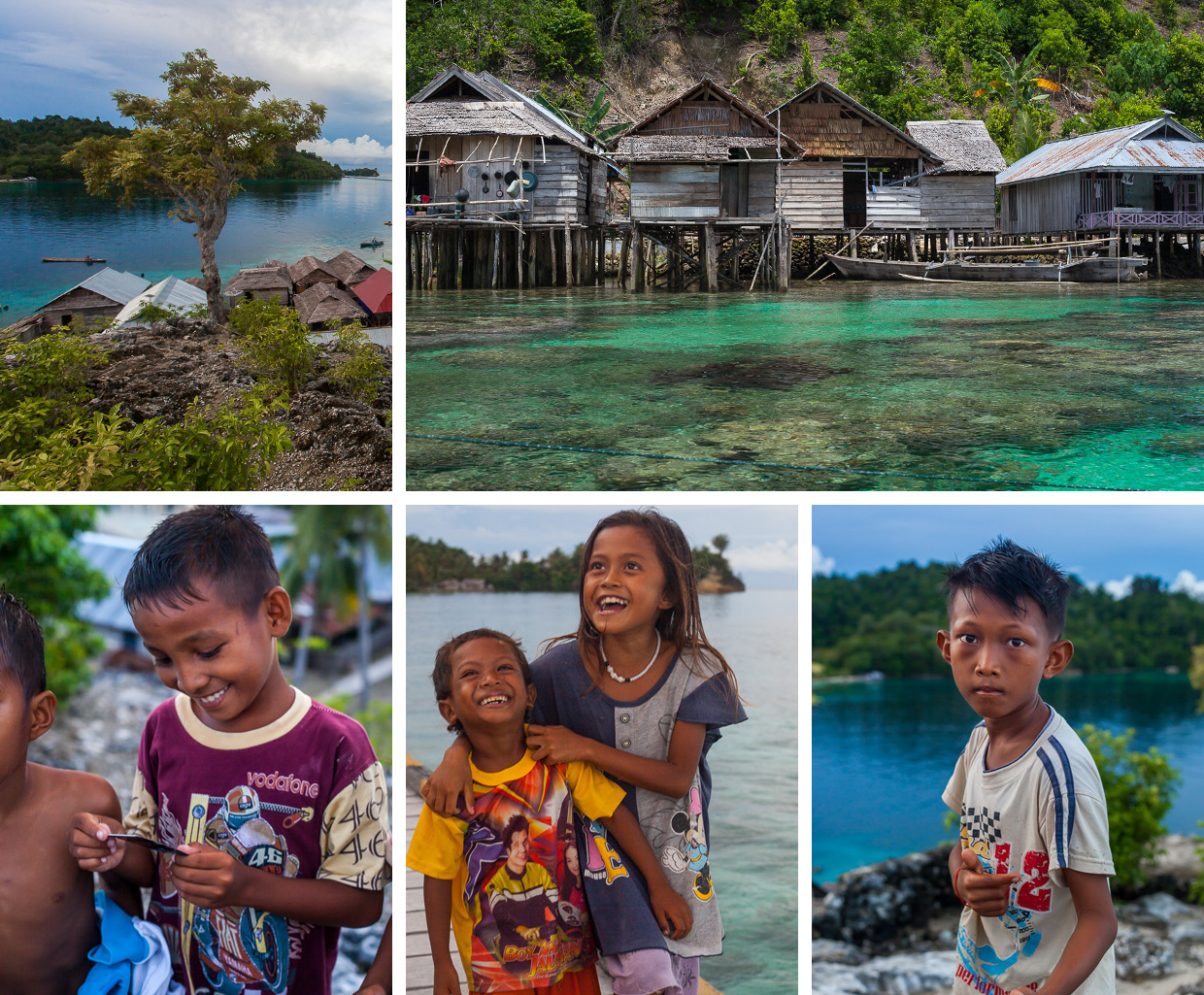

As we made our way to the top of the hill in the village, we were overrun by more children, defiant and proud looks on the boys’ faces, appearing to demand our respect. The ratio of children to adults in the village was surprising. We soon learnt that for Bajau men having children was taken as a sign of strength and prosperity, a father being perceived as capable of providing more than enough in his time at sea to feed a large family. On average a family at Palau Papan has around five or six children – any fewer is deemed weak.
The smiling hordes of children scurried back down the hill, fighting over an instant photo we had given them. As we headed towards the dock beside the village, the sweet scent of the jungle washed over the wooden island and the generators purred as lights came on for a couple of hours while the sun set. Families could be seen huddled around small TV sets watching soap operas, the settings and actors contrasting greatly with life on Palau Papan. As we arrived at the dock, the sun’s edge brushed the horizon and touched everything with an amber light. The fishermen had returned from the day at sea; now their friends congregated on the dock to chat and relax in the last of the day’s light.
We boarded the boat back to the Spaniards’ beach, and looped around the island as we left. My heart raced as I looked around and tried to take in the outstanding beauty of where we were, and contemplated how we had made it to such a remote location. A sense of calm lingered in the air as we left; whether it was from the evening light or the resonant feeling I had kept from the smiling Bajau, I was not sure. The last of the light outlined the shapes of children running back along the walkway to the village, and as the sun dropped lower we gazed out to sea for another glowing display from the plankton.
Watching the smiling children running back to the village, the eternal positivity of the Bajau felt as if it were glowing out of Palau Papan. This last view of the nomads really brought home how important it is for us to keep moving, especially when considering my diabetes. To stop moving invites complacency, softens resolve and leads to doubt, but to keep moving sharpens you, and brings a willingness to survive. Enthusiasm does more than just bring a smile – it will often keep you living an inspired life.
Ted Lamb is a documentary photographer and storyteller who focuses on social & environmental issues.
Website: www.tedlamb.com
Instagram: @tedlambphoto




